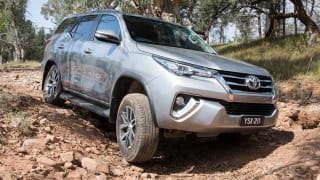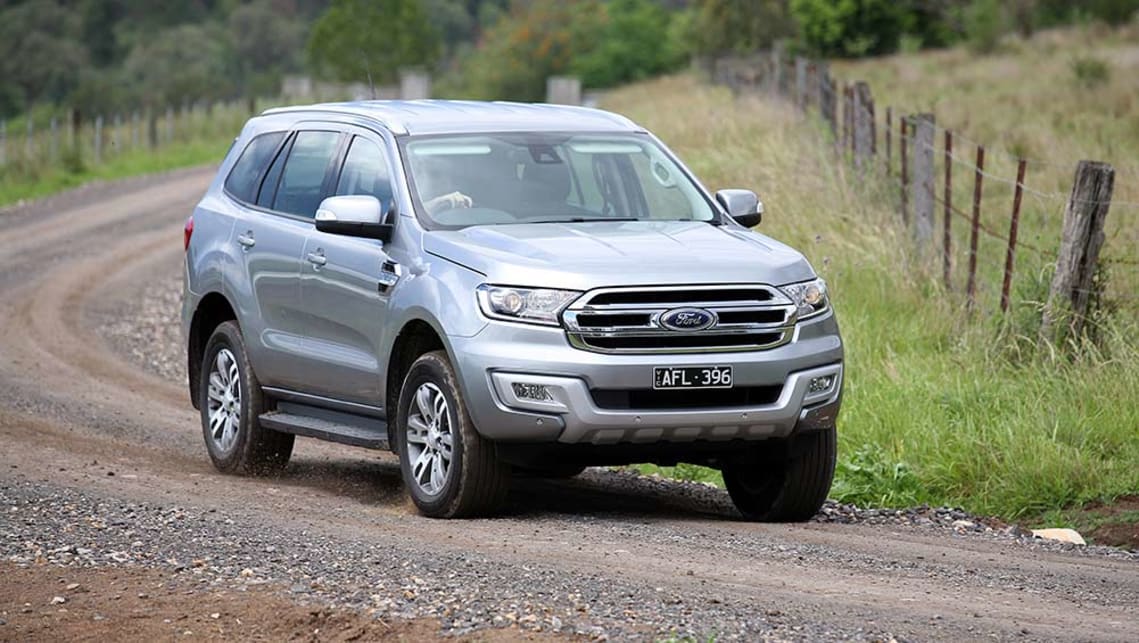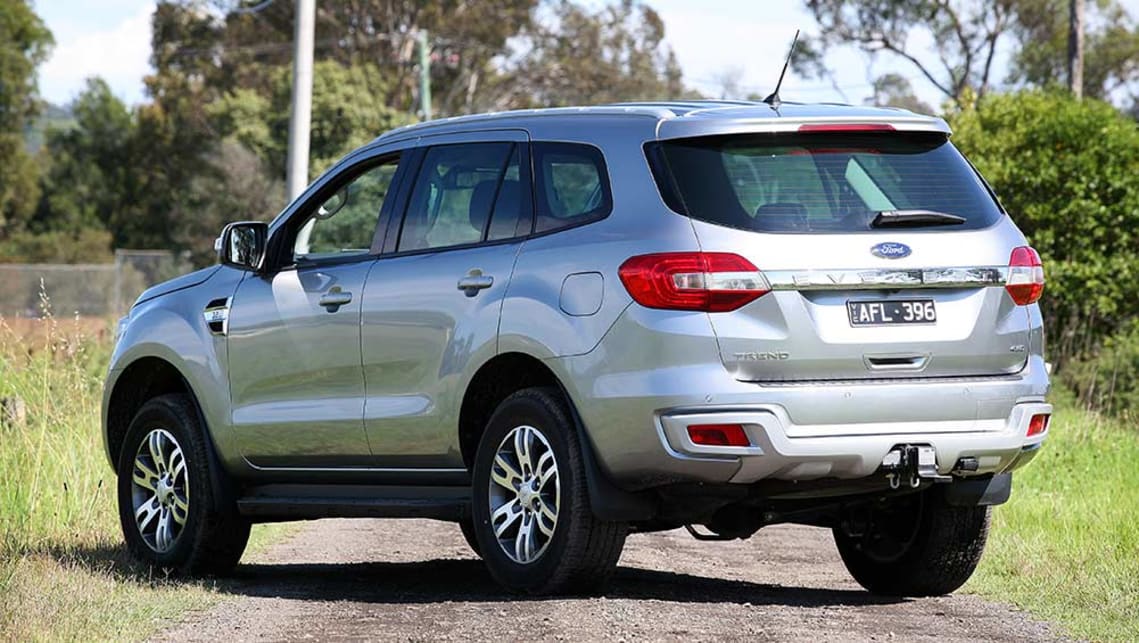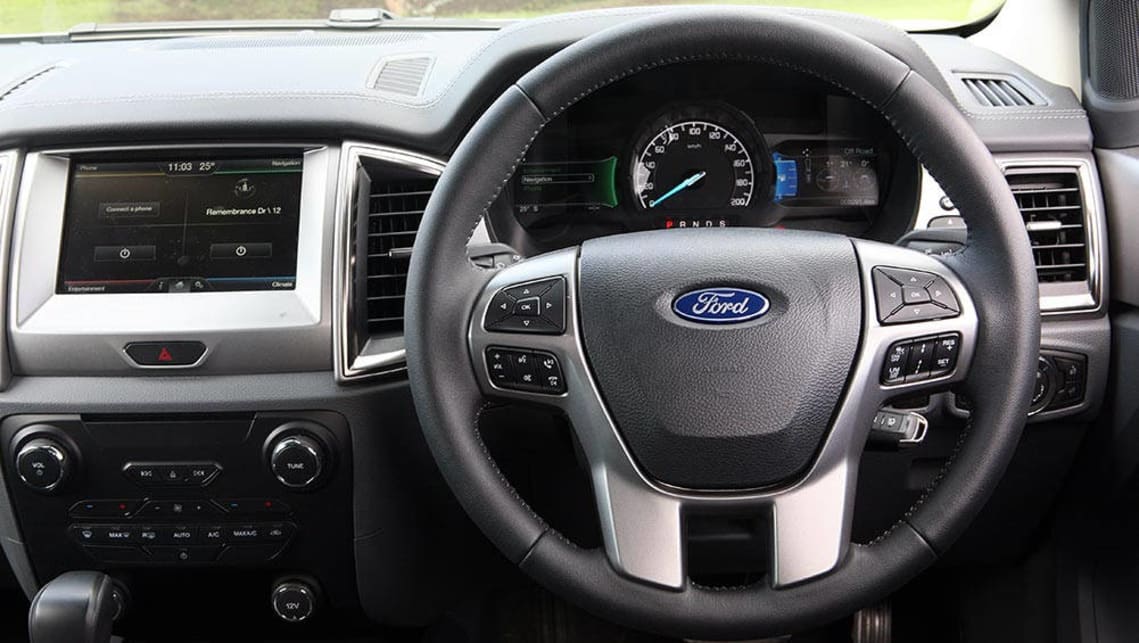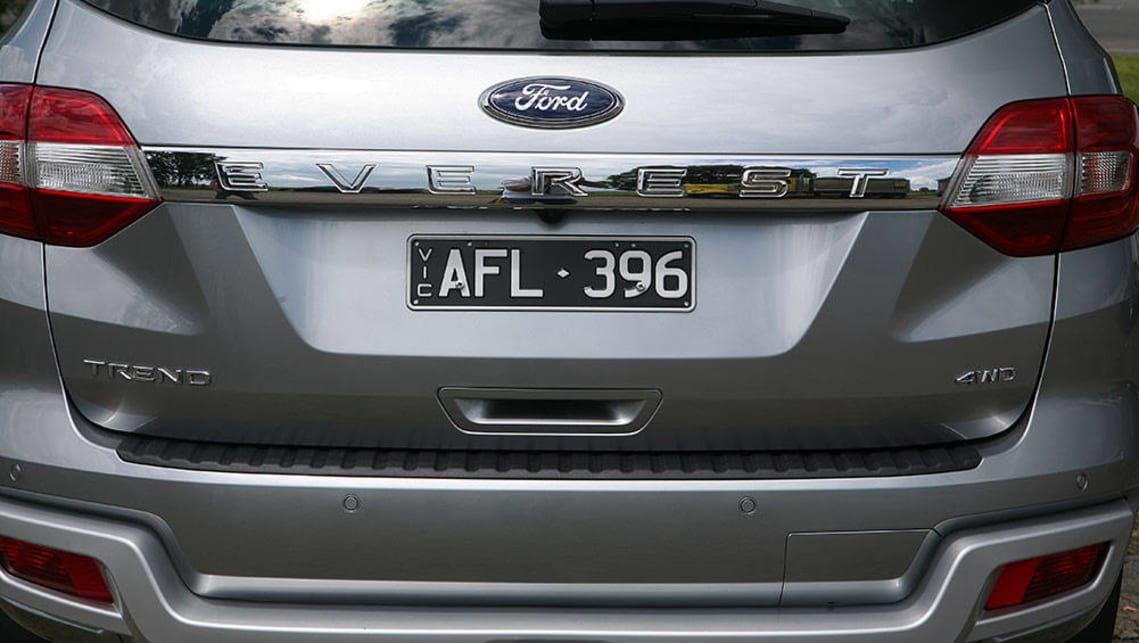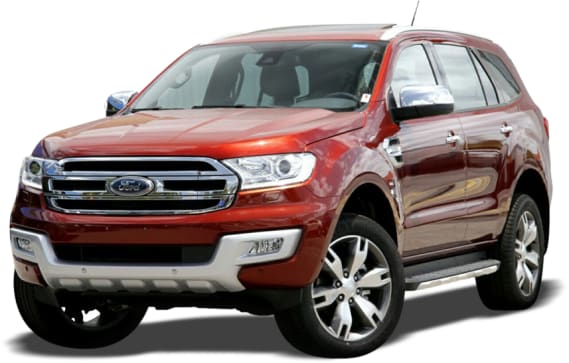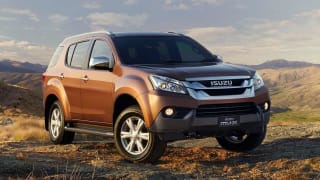Everest is big. Okay, that's stating the obvious about the world's highest mountain. Now let's talk about the new eponymous four-wheel drive wagon from Ford. The Ford Everest is big too.
In fact it seems that everything about it – radiator grille, rear end, guards and wheels, even badging - has been designed to make the SUV appear as big as possible.
At close to five metres long, more than two metres wide and almost two metres tall, the Everest sports an impressive presence on and off road. It also makes for a spacious and versatile cabin capable of carrying up to seven occupants and gear in relative comfort.
We can all stand tall too knowing the all-new Everest has been a centrepiece of Ford's close-to $2 billion research and development investment in Australia over the past six years as it was developed by our people to take on some of the world's toughest conditions.
The seven-seat 4WD wagon comes in three variants – Ambiente, Trend and Titanium – priced from $54,990, plus on-road costs, topping out at $22,000 more. The test vehicle was the mid-range Trend at $60,990.
Design
Ford Everest physically is no shrinking violet. With a rugged appearance all three variants stand their ground with any rival in the market segment with the Trend taking on such features as 18-inch alloy wheels, running boards and rear power lift-gate.
A chromed trapezoidal radiator grille is flanked by the latest in integrated projector headlamp / LED daytime running light set-ups that make sure the Everest is seen easily by other road users in testing weather conditions.
Five-spoke 18-inch alloy wheels and sleek side panels emphasise on-road character, while generous ground clearance (225 mm) and 800 mm wading depth get the Everest ready for anything that might stand in its way off the bitumen.
Aerodynamics receive some attention, with a front under-shield, and integrated aerodynamic 'kickers' flanking the rear window to help reduce drag, giving the vehicle a friction co-efficient of Cd 0.39. Hopeless by car standards, not too bad for a pickup-based SUV.
The square shaped rear of many traditional SUVs is left behind by Everest's sculpted tail lamps, with integrated LED lighting.
The cabin is a seven-seater. The second row slides forward far enough to make access to the back row manageable, and rear legroom adaptable.
The glovebox can take a 16-inch laptop.
Flexible second-row seats have 60/40 split, and power-fold third-row seats with 50/50 split, can be folded flat, providing 2010 litres of cargo space with a class-leading payload of up to 750 kg.
Everest Trend and Titanium occupants enjoy the benefits of dual zone climate control and more than 30 stowage spots totalling 48 litres (the glovebox can take a 16-inch laptop), while sound insulating materials and active noise cancellation technology make for a quieter cabin.
Features
The instrument cluster includes dual 4.0-inch colour screens and a high resolution 8.0-inch colour touchscreen in the Interior Command Centre.
An AM/FM/CD audio system with DAB+ digital and 10 speakers is augmented with Aux/iPod/ USB/SD card input ports. Ford's Sync 2 brings voice control with simple commands for many vehicle and convenience systems and emergency assistance connects drivers with emergency responders in a serious collision.
Engines / Transmissions
The Australian Everest is powered by the 3.2-litre Duratorq five-cylinder turbo-diesel engine found in the Ranger pickup and is designed for maximum power and torque for ultimate off-road and towing performance, without sacrificing fuel efficiency.
Power output of 147 kW and torque of 470 Nm are the result of updated exhaust gas recirculation system. Customers gain from high torque for heavy-duty towing (up to 3000 kg) and off-road use.
Ford's Terrain Management System fine tunes the vehicle's throttle response, transmission, traction control and intelligent four-wheel drive to optimise performance under varying conditions. Settings – Normal, snow / gravel / grass, sand, or rock – can be dialled up via a knob on the centre console.
Even the basic Everest is a rugged, comprehensively packaged 4x4.
The control also incorporates hill descent control, which can be activated in any conditions. An electronic locking rear differential helps prevent the rear wheels from spinning while driving off-road, increasing traction in challenging going. It can be locked automatically when using off-road TMS modes, or toggled manually using the differential lock button.
Safety
Ford everest has seven airbags, including a driver's knee airbag. Dynamic Stability Control with Roll Stability Control, ABS anti-skid brakes with Electronic Brake force Distribution, Traction Control and Emergency Brake Assist are constantly active when on the move.
Parking is made relatively easy with the use of a rear-view camera, plus audible sensors front and rear.
Driving
Even the basic Everest is a rugged, comprehensively packaged 4x4. The Trend adds extra driver assist technologies such as Adaptive Cruise Control with forward alert collision mitigation and Lane Keeping System.
The Ford Everest is started with a turn of an old-style ignition key. That's not as simple as it seems in the dark, for there is no illumination of the keyhole the driver is aiming for.
As far as fuel consumption is concerned the Everest used an astonishingly meagre 6.8 litres per 100 kilometres on the motorway. However, true to form, the beast devoured anything up to 16 litres of diesel per 100 prowling around town.
Ford's Australian engineering team set out to give Everest a balance of rugged off-road capability with refined on-road manners through an advanced four-mode Terrain Management System.
Even so, it's impossible to be all things to all situations. There is a degree of compromise in ride and handling on the bitumen. Still it's a sterling effort all round.
The forward collision warning can be a pain, beeping and flashing a row of red lights on to the windscreen when it senses traffic in front moving slower. It loads up the brakes and slows down with it. After the traffic clears the vehicle works its way back up to the preset cruise-control speed.
Ford says this system is normally found only in premium passenger cars. They can keep it. If the driver's not concentrating on what's ahead, he / she should not be behind the wheel.
